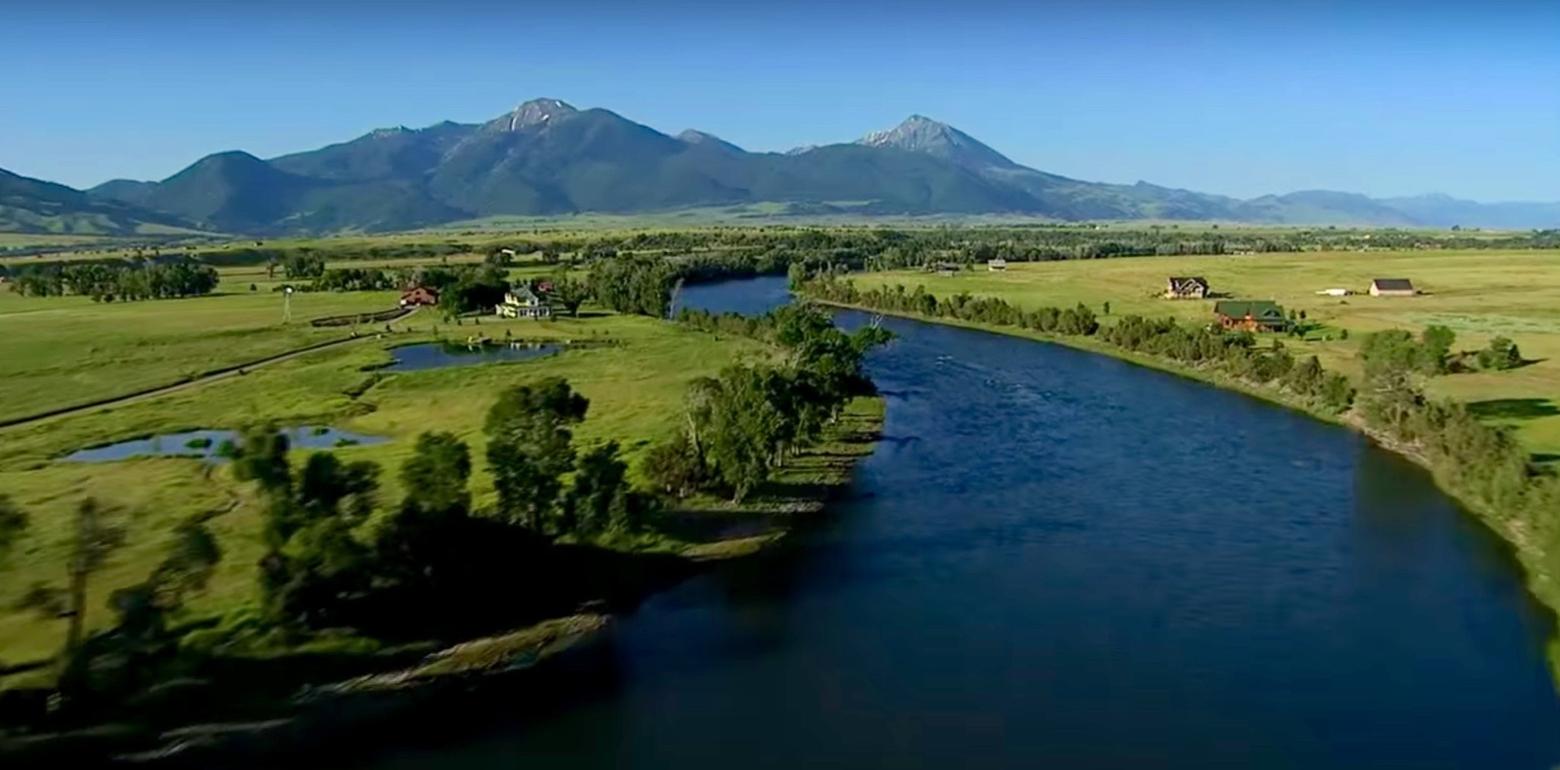Back to StoriesIs Greater Yellowstone Really Ready To Confront Its Future?
November 22, 2017
Is Greater Yellowstone Really Ready To Confront Its Future?FutureWest Hosts Symposium At Emerson Cultural Center In Bozeman
Are leaders in the Greater Yellowstone Ecosystem really prepared to deal with changes now bearing down on the wildest region in the Lower 48?
Bozeman-based organization FutureWest is
hosting an important symposium Weds, Nov. 29 focused on key Greater Yellowstone trend lines.
Whether one is an elected official, public land manager, business
person, outdoor recreationist or conservation-minded citizen, the one-day event
on at the Emerson Cultural Center comes at a
timely, pivotal moment in the history of our region.
Right before our eyes dramatic changes are sweeping across the
landscape and we feel, at a gut level, the character of our communities being
transformed.
FutureWest’s conference, “Sustaining the New West: Conservation
Challenges – Conservation Opportunities”, will bring together a number of big
picture thinkers to help us make sense of it all.
“Everyone’s talking about how quickly the West is changing, but do
we really understand these trends and what they mean for the future of our
natural environment?” asks Dennis Glick, the founder of FutureWest, saying it’s
time for leaders to seriously reflect on the pace of growth, rural sprawl,
intensive outdoor recreation, transportation infrastructure, and climate
change.
“More important than just calling attention to these issues which
cumulatively have far-reaching consequences for the northern Rockies, we’ll
learn about the actions people and communities are taking to overcome these
problems,” Glick says. “Unless we act we are going to lose this place.”
Not long ago, Teton County, Wyoming resident Luther Propst, whose
career has been devoted to examining growth trends from Greater Yellowstone to
the Sonoran Desert, made the following observation:
“The problem is that the Lords of
Yesteryear never disappeared as we were promised and the challenges of the New
West are far worse than we were promised,” he said. “I don’t want a West of
man-camps and gas field booms, nor a West of precious tourist towns that exist
to feed a global cowboy/mountain man/Disney/ski resort/New Age fantasy,
surrounded by busted towns that are ghettos for workers.”
The 20 counties of Greater Yellowstone together are the fastest-growing
rural region in the country. Bozeman, for its size, is one of the
fastest-growing small cities in America.
Yellowstone and Grand Teton national parks continue to meet or set
visitation records. Jackson Hole is dealing with agonizing affordable housing
issues and planning issues spilling over Teton Pass into Idaho. Big Sky is contending with dizzying real
estate development and epic water treatment concerns.
In just two decades, at conservative growth rates, the total
population of Bozeman/Gallatin County, Montana will be equal in size to Salt
Lake City proper. By 2030, there will be
another 100,000 new homes in Greater Yellowstone. In the absence of thoughtful
planning, many will be built in critical wildlife habitat and forested areas
prone to being burned by wildfire.
The very values that set Greater Yellowstone apart in America and drive
prosperity—its unparalleled wildlife, high air and water quality, and inspiring
views—are being jeopardized by growth and the unwillingness/inability of
communities to plan ahead.
By 2030, there will be another 100,000 new homes in Greater Yellowstone. In the absence of thoughtful planning, many will be built in critical wildlife habitat and forested areas prone to being burned by wildfire.
Among those giving presentations are former Salt Lake City Mayor
Ralph Becker on how to prevent planning mistakes and Ray Rasker of Headwaters
Economics on the value of protected landscapes for local economies and
budget-busting problems being created for counties in battling wildfires.
There will also be discussions with Dr. Steve Running, a Nobel
Prize winning scientist, on climate change, chats about how highways are
becoming death zones for wildlife, unprecedented human pressure being exerted
on wildlands by outdoor recreation, and the need for coordinated city-county planning
in confronting sprawl.
Besides the undeniable growth trends, Randy Carpenter, a planning specialist
with Future West, says the biggest wildcard facing Greater Yellowstone is how
the region could be inundated by climate change refugees.
The U.S. desert Southwest is expected to broil even hotter,
bringing water shortages in decades ahead; meanwhile U.S. coastal areas are
dealing with rising tidal surges and hurricanes. Where will people go?
Greater Yellowstone is attractive to people of means who can afford
to live here but there could be waves of others, he said. “The only thing
slowing growth would be water challenges, particularly if we start losing our
snowpack,” he said.
Unless attitudes change, growth patterns that have harmed other regions
will be replicated here, he said.
“In the middle of a boom, we rarely hear about downsides,”
Carpenter explained. “The boosters don’t want to hear it. They choose to live
in denial and their attitude works as long as it’s not challenged. I’ve seen a
lot of farms and wildlife habitat disappear but I’ve never seen a subdivision
vanish. Concrete, asphalt, roads, traffic, noise pollution—they are forever.
What we forget is that the Greater Yellowstone Ecosystem isn’t just uncommon.
It is an American treasure and the only one of its kind in the world.”
Readers can find more information about the conference at: www.future-west.org
Related Stories
March 19, 2019
The Value Of Open Space: In The Gallatin Valley Citizens Voted For Protection With Their Wallet
Ag lands play a critical role in maintaining the integrity of Montana's fastest-growing valley. This is the first piece in an...
April 29, 2023
Robert Staffanson On What It Means To Be A Real Cowboy
Not the kind of wrangler you see on 'Yellowstone': Staffanson, a Montana ranch kid, re-invented himself twice—as symphony conductor and Native...
March 11, 2019
The Power Of Words: How We Use Language To Justify Our Consumption Of Nature
MoJo columnist Susan Marsh waxes on how we 'harvest' living things to avoid admitting we're taking their lives




